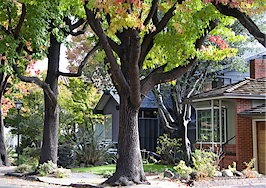Inman Connect New York delivers the perfect blend of outside-the-box thinkers, cutting-edge leaders, and hard-working, successful agents. Join us Jan. 24-26 for crucial content, education, and networking opportunities to help you thrive in today’s changing market. Register here.
Home prices continued to fall in September as buyer demand cooled, according to data released Tuesday, compiled by the real estate analytics provider CoreLogic.
The data shows that home prices posted a 0.5 percent decline between August and September and were up 11.4 percent from September 2021 — a relaxed rate of annual growth compared to previous months.
The once out-of-control housing market has largely been brought to heel by the steep increase in mortgage rates, which surpassed 7 percent in October, bringing the share of income required to make a typical monthly mortgage payment up to 30 percent.
Price growth is uneven across the country as some markets that saw unprecedented growth during the COVID-19 pandemic have begun price correction while others are still seeing a sustained rate of migration.
“The rapid increase in prices during the COVID-19 pandemic caused many U.S. housing markets to reach completely unaffordable levels for potential local homebuyers,” Selma Hepp, interim lead of the office of the chief economist at CoreLogic, said in a statement. “On the West Coast and in Mountain-West states, home prices are slowing from this spring’s high but remain elevated from a year ago. By contrast, markets that continue to see an in-migration of higher-income households are still experiencing home price gains that are notably higher than the national rate of appreciation.”
For instance, Miami’s price growth has continued at a strong pace, growing 25.6 percent annually — the largest of the country’s 20 biggest metro areas, while Tampa sat in the second-place spot with 23.3 percent growth.
Florida posted the highest overall annual price gains at 23 percent, followed by South Carolina which saw 17.6 percent growth. Tennessee ranked third with a 17.4% year-over-year increase while Washington, D.C. ranked last for appreciation at just 1.8 percent.













